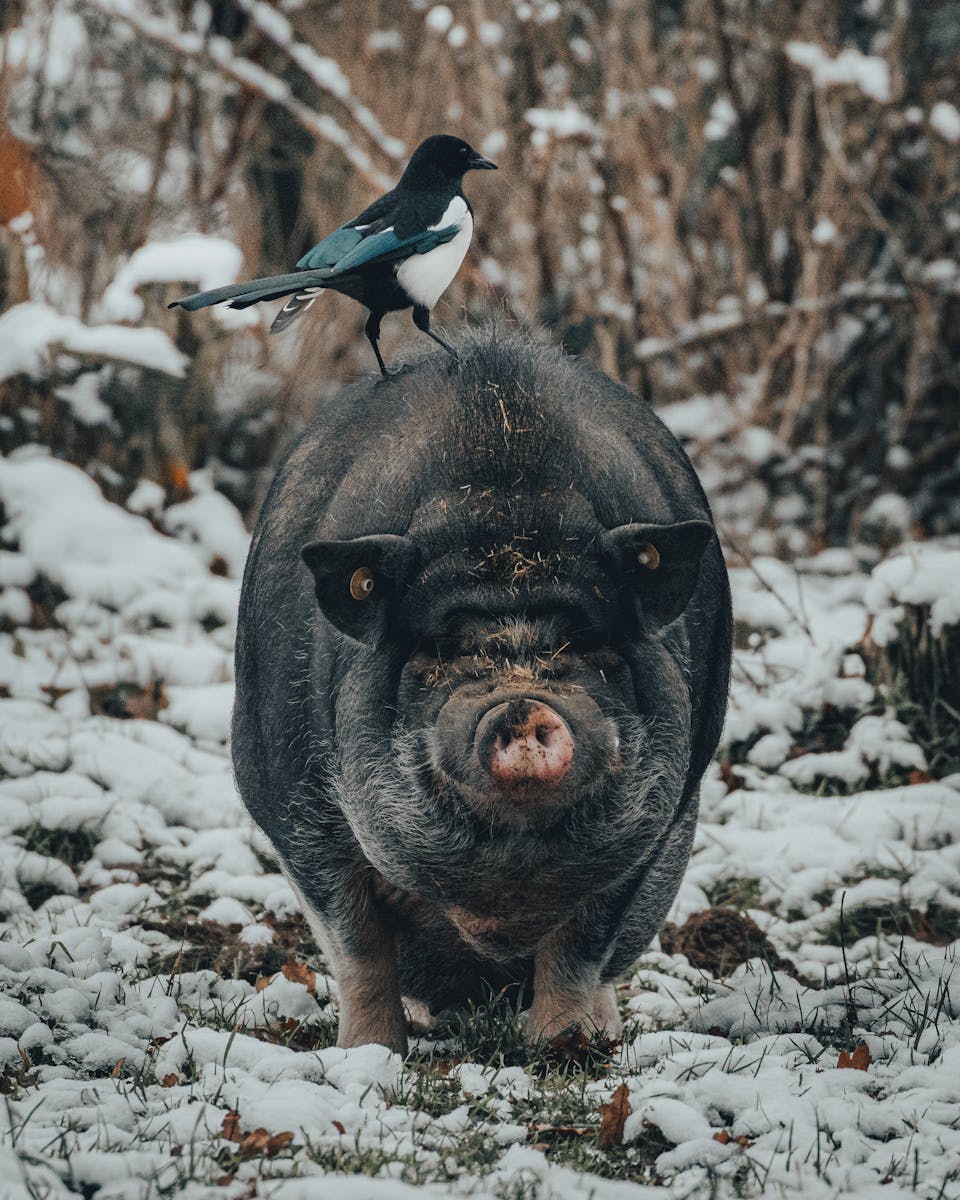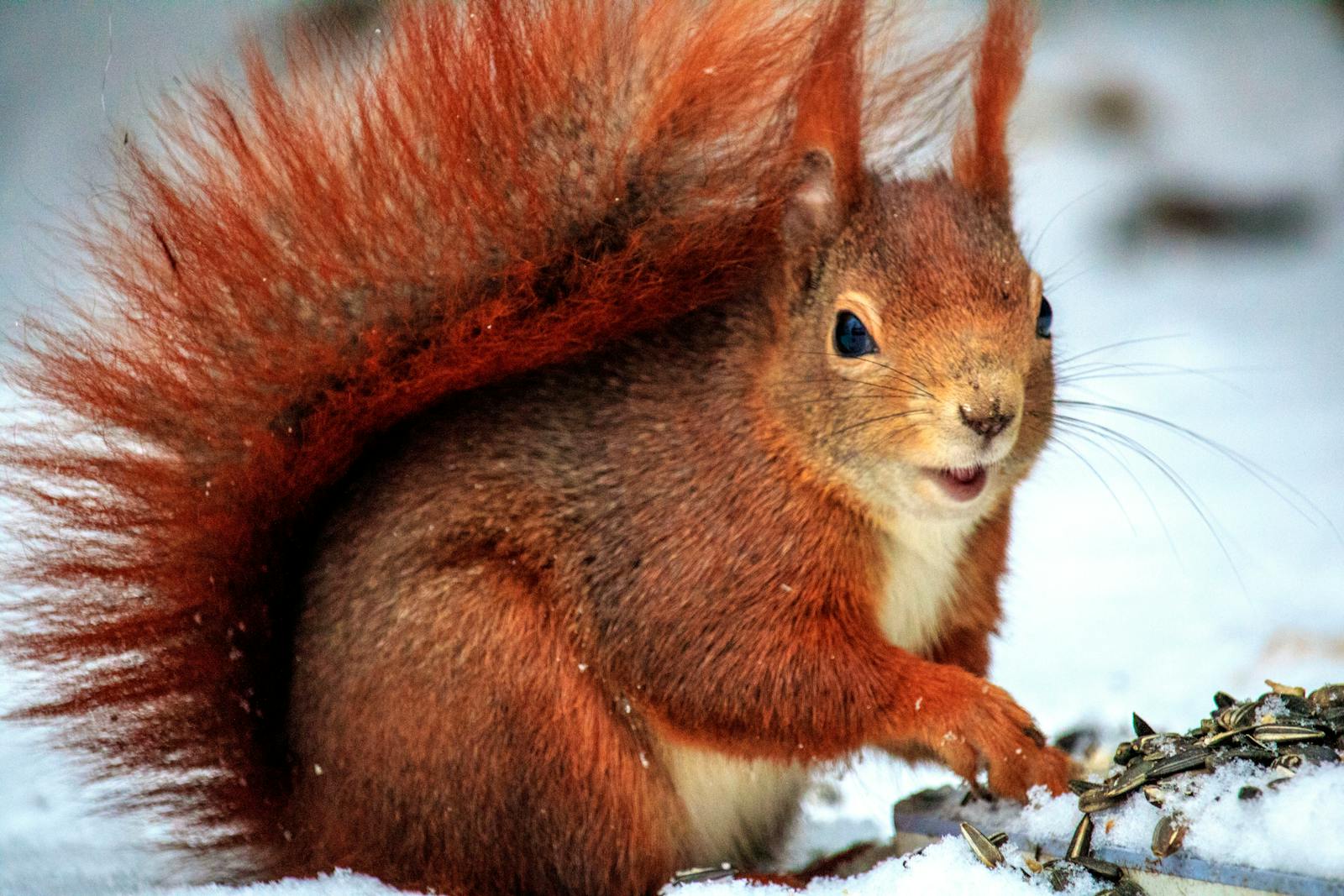Construction Behavior
-
Pigs demonstrate remarkable ingenuity when constructing shelters, often referred to as pigloos, by utilizing available resources such as mud, straw, and even snow. These structures serve as highly efficient insulated habitats pivotal for their survival in colder climates. Pigs’ muddied shelters are cohesive and thermally effective, as mud hardens and retains heat when dried. Incorporating straw offers additional insulation and structure, while snow in colder regions creates a naturally adaptive thermal barrier due to its insulating properties. This behavior underscores pigs’ environmental adaptability and their innate skill in leveraging natural materials to create microhabitats conducive to warmth and safety.
- The construction process showcases their problem-solving skills and social dynamics.
- Pigloos often have a rounded shape, which helps distribute weight and prevents collapse.
- Territory marking is common during construction, reinforcing social hierarchies among pigs.
-
The ability to construct these shelters indicates a level of environmental adaptability.
The construction of pigloos by pigs highlights a remarkable level of environmental adaptability. This behavior demonstrates their ability to utilize available resources such as mud, straw, and snow to create insulated structures that offer protection against harsh weather conditions. Such adaptability is crucial for survival, as it allows pigs to modify their behaviors and use their surroundings to regulate temperature and maintain comfort. This ability showcases an evolutionary advantage, indicating that pigs can respond to environmental challenges by altering their habitat, thereby enhancing their resilience and capacity to thrive in diverse and changing conditions.
Thermal Regulation
-
Pigloos provide necessary warmth during cold winter months, aiding thermoregulation.
Pigloos are integral to a pig’s survival in cold climates, acting as ingenious structures for thermoregulation during harsh winter months. By providing a well-insulated barrier from external elements, these shelters maintain a stable, warmer internal environment despite falling temperatures outside. The thick walls of pigloos, often composed of compacted materials like snow, straw, or mud, serve to limit heat loss and prevent cold air infiltration. This thermal regulation is crucial for conserving the pigs’ body heat, ensuring their survival in environments that would otherwise be energetically taxing.
In addition to serving as a protective barrier against the cold, pigloos play a role in reducing the metabolic strain on pigs during winter. Without such insulated shelters, pigs would need to expend significantly more energy to maintain their core body temperature, which could impact their overall health and foraging efficiency. The warmth provided by pigloos is not merely about comfort; it is a biological necessity, supporting rest, energy conservation, and ultimately, their ability to thrive in demanding weather conditions. This innovative use of natural resources showcases the adaptability of pigs and their ability to modify behavior to suit fluctuating environmental demands.
- The thick walls of pigloos trap heat, creating a microclimate favorable for relaxation and rest.
- Pigs demonstrate behavioral thermoregulation by moving in and out of their shelters as needed.
- Interactions within the igloo increase body warmth through mutual social contact.
- The structure’s design allows pigs to escape cold winds, preserving their energy reserves.
Social Interaction
-
Pigloos serve as a communal space for social bonding, promoting group cohesion.
Pigloos, as communal spaces, play a vital role in fostering social bonds among pigs, thereby enhancing group cohesion. These structures provide a safe environment where pigs can congregate and engage in social activities, such as grooming and playing, which are essential for maintaining strong social ties. The close physical proximity facilitated by pigloos allows pigs to engage in nurturing behaviors, reinforcing social hierarchies and trust within the group. Moreover, the shared occupancy of pigloos during rest periods enables pigs to synchronize their activities and establish a rhythm in their daily interactions, further promoting harmony and cooperation within the herd.
-
Pigs often show pecking order behaviors when entering or occupying a pigloo.
Pecking order behaviors among pigs are a manifestation of their complex social structures and hierarchical organization, especially evident when competing for access to shared resources like pigloos. Dominant individuals typically assert their status by entering the pigloo first or occupying prime areas within the structure. This behavior ensures their access to the most comfortable or thermally advantageous spots. Subordinate pigs may demonstrate submissive postures or patiently wait their turn, often sharing peripheral space. These interactions are essential to maintaining group harmony and social cohesion, allowing pigs to navigate communal living within confined and resource-limited environments effectively.
- Group dynamics influence how space is utilized within the pigloo, affecting access and hierarchy.
- Play behavior among pigs often occurs in and around pigloos, enhancing social learning.
- The communal nature of pigloos fosters increased communication through vocalizations and physical interactions.
Ecological Impact
- Pigloos can impact soil structure and vegetation through rooting behavior around the structures.
-
The microhabitats created by pigloos may attract other wildlife, promoting biodiversity.
The construction of pigloos by pigs inadvertently creates microhabitats that become attractive niches for various forms of wildlife, thereby enhancing local biodiversity. As pigs shape and compact the snow, mud, and straw into their unique shelters, the resulting structures provide niches that smaller creatures can exploit. For instance, small mammals such as mice and voles might utilize the warmth and cover provided by pigloos for nesting or as temporary refuge from predators. Similarly, insect species attracted to the organic materials used in construction can contribute to a vibrant micro-ecosystem in and around these shelters.
Furthermore, the altered environment around pigloos, enriched with nutrients from soil turnover and organic matter deposition, can potentially lead to the establishment of specific plant communities. These new plant clusters may attract birds and herbivores, creating a chain of ecological interactions that further supports biodiversity. By understanding how pigloos influence surrounding ecosystems, researchers can gain valuable insights into the broader implications of animal behavior on habitat creation and conservation efforts.
- Piglos contribute to nutrient cycling by their decomposition of organic material within and around them.
- Pigs’ natural behaviors of construction and play reshape their environment, demonstrating ecological engineering.
- Understanding pigloos offers insights into the interactions between animal behavior and ecosystem management.
What are your thoughts on this tool? Leave feedback →






